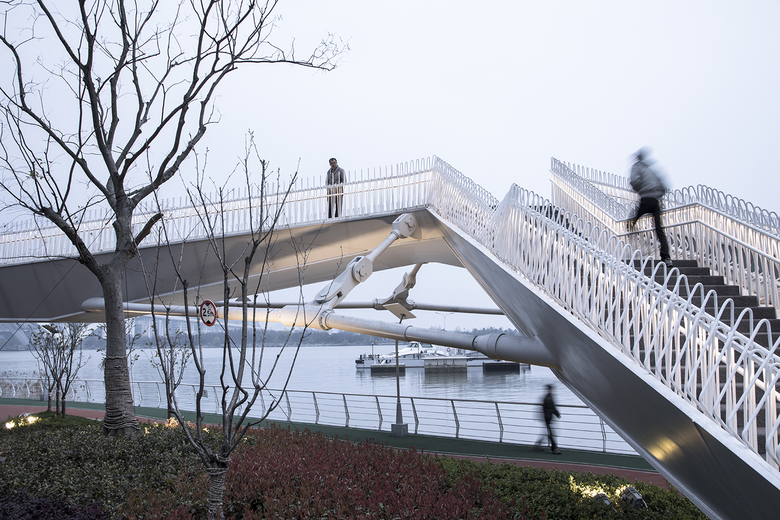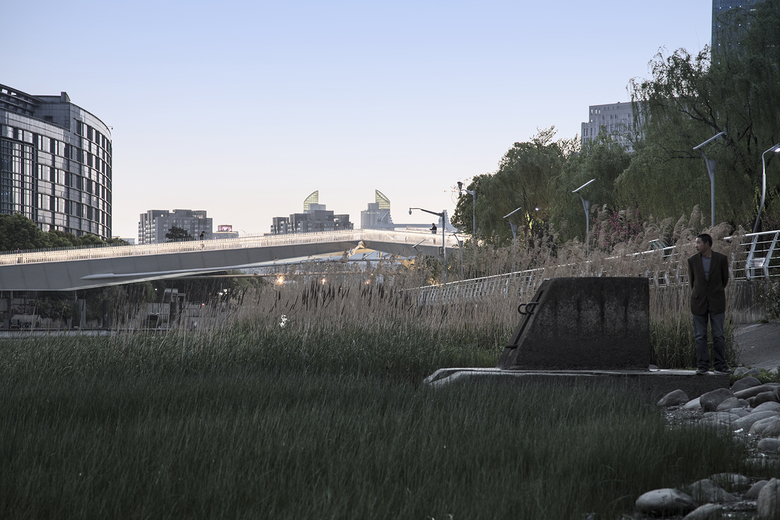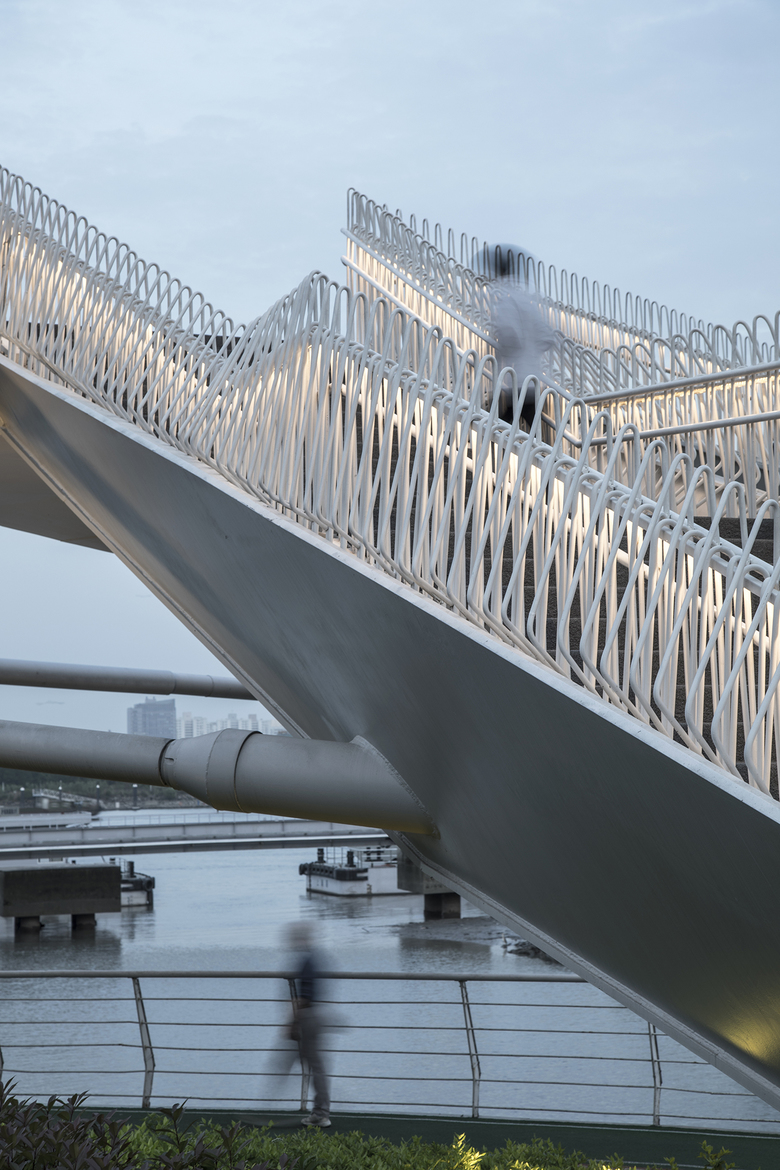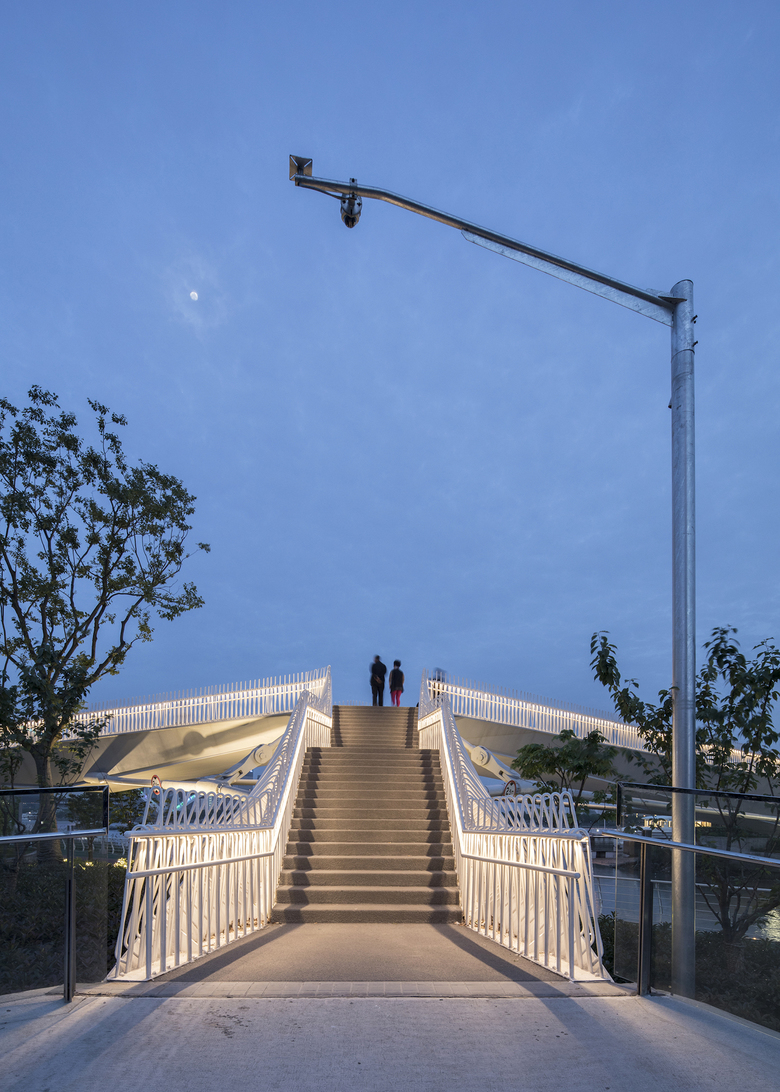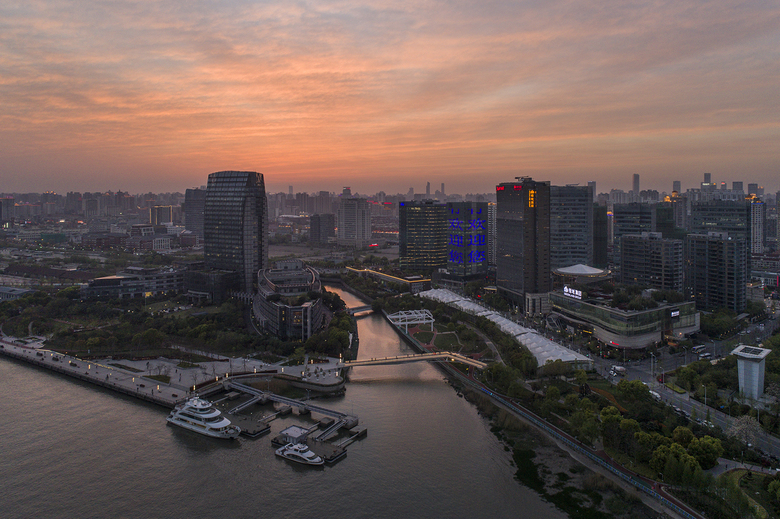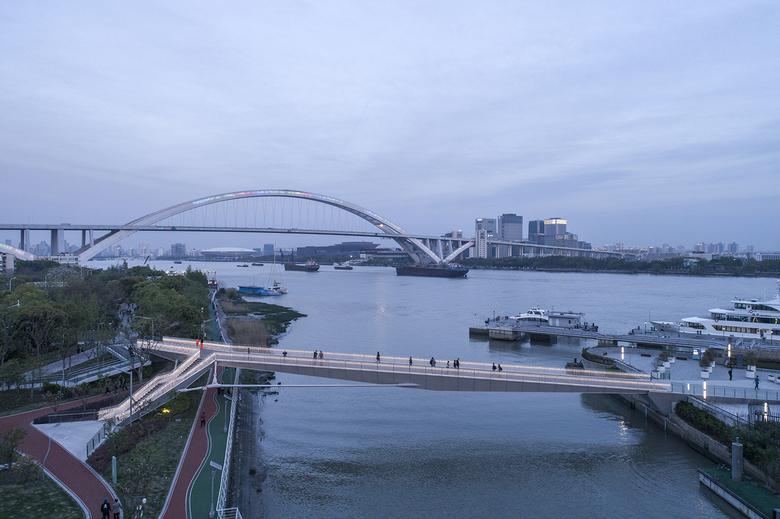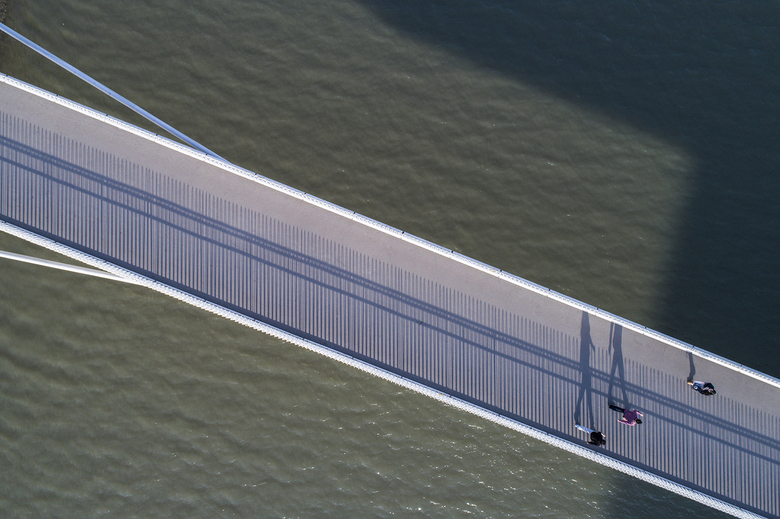Footbridge on Rihui River
Shanghai, China
Rihui River Footbridge spans 70m of the width of one branch of Huangpu River, lacing the public space of Xuhui District and Huangpu District. It provides the pedestrian route that bridges a gap in the Puxi waterfront.
The two ends of the footbridge are taken charge by different districts, with distinct site characteristics. Xuhui side is broad and flat, the scale of which is almost a public plaza; while Huangpu side is more like traditional Chinese garden with all the complex topography and wandering lanes. The footbridge must take into account the two scales on both sides and manage the human flow and connection of different levels properly. Plus, it shall not interfere with the passage of vessels on the river, as well as that of passers-by on the bank.
During the phase of site analysis and initial design, we already realized that conventional bridge designs, like single-span, multi-span and pontoon, have problems under this particular circumstances (blocking the passage, too bulky or too much modifications of topography etc.). We reckoned that a lighter and more flexible layout is needed for the complex site; therefore, we went for a Y-shape proposal. On the one hand, the fork of the footbridge breaks the big scale of Xuhui District into two smaller-scale branches connected to the Huangpu District; on the other hand, the three footings of this proposal convert single beam to three beams that meet together, leaving room for height difference of footings. The system of three bridge segments supporting each other gives a hint to the structural model.
Over the course of more-than-one-year careful discussions with structural engineers Ohno Hirofumi and Zhang Zhun, we have considered four possible structure systems. Single-rib single-sided bracing and Single-rib V-shape bracing have better visual effects, but they both demand much more for construction quality and detail design. The mechanical performance of these systems are inferior than Single-rib truss bracing and three-way ribs proposed by Ohno. However, the last two systems also have their own weaknesses. For one thing, the difficulties of construction increase. For another thing, the structure of truss lacks aesthetic values while three-way ribs may affect the headroom above water. In light of relatively loose earth condition in Shanghai, the system of three-way ribs is preferred for its almost half-reduced counter-force at the footings.
Because the position of the footings slightly changed in the interim design, the original structure cannot be applied directly. Instead, we formulated Y-shape beam string structure system. The bridge segments have triangular sections to resist bending moments according to force analysis. They are hinged together and support each other in thrust. The structure, on the one hand, is beneficial in terms of restricting beam height; on the other hand, the strings play an essential role in lessening and balancing the thrust at the foundations. The strings are usually arranged at the bottom; in this particular case, such treatment will not only block the traffic of people and vessels but also make the reduced beam height meaningless. As a result, the strings connect the middle part of each beam where the section is the deepest. This system may not be the best option to balance the thrust, but it enables the passage underneath the footbridge.
Nevertheless, the straight strings would discourage the human flow under bridge even though the headroom is within acceptable range. We were still looking for a way to really turn the structure into space. At last, we placed a tie rod at the middle point of the string to slightly pull it up, in order to make the whole construction more welcoming. In doing so, the footbridge becomes more integrated and powerful. Intricate in thinking, the structure of the footbridge appears to be effortless. It really converts the architecture into a comfortable urban place above water.
- Architetti
- Atelier Deshaus
- Anno
- 2012-2016
- Structural engineering
- Ohno Hirofumi
- Structural engineering
- Structure AND Architecture OFFICE
